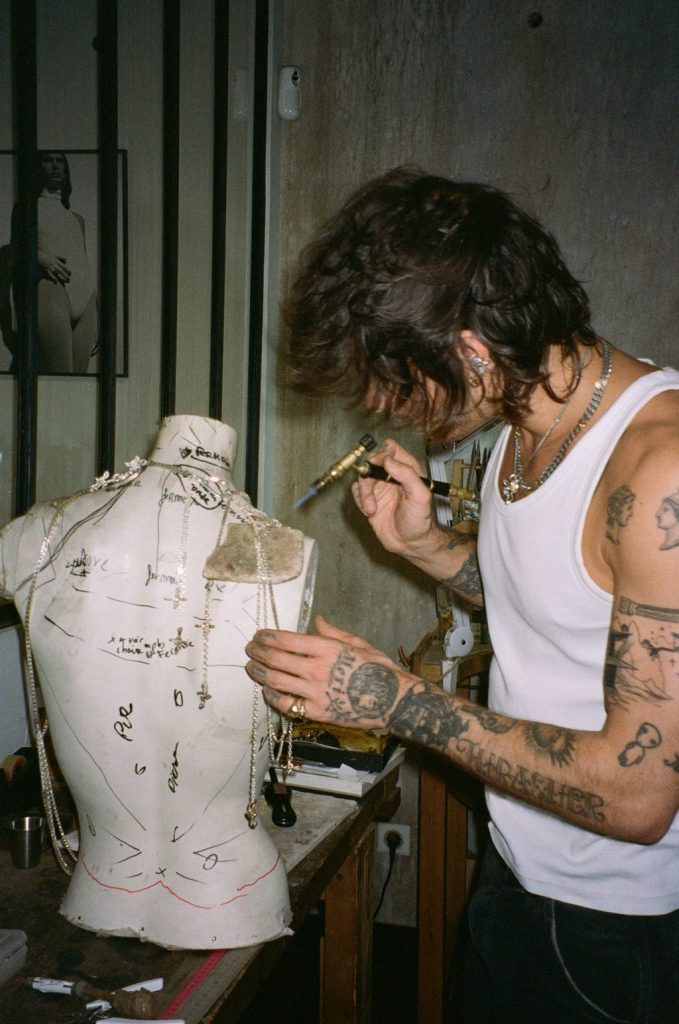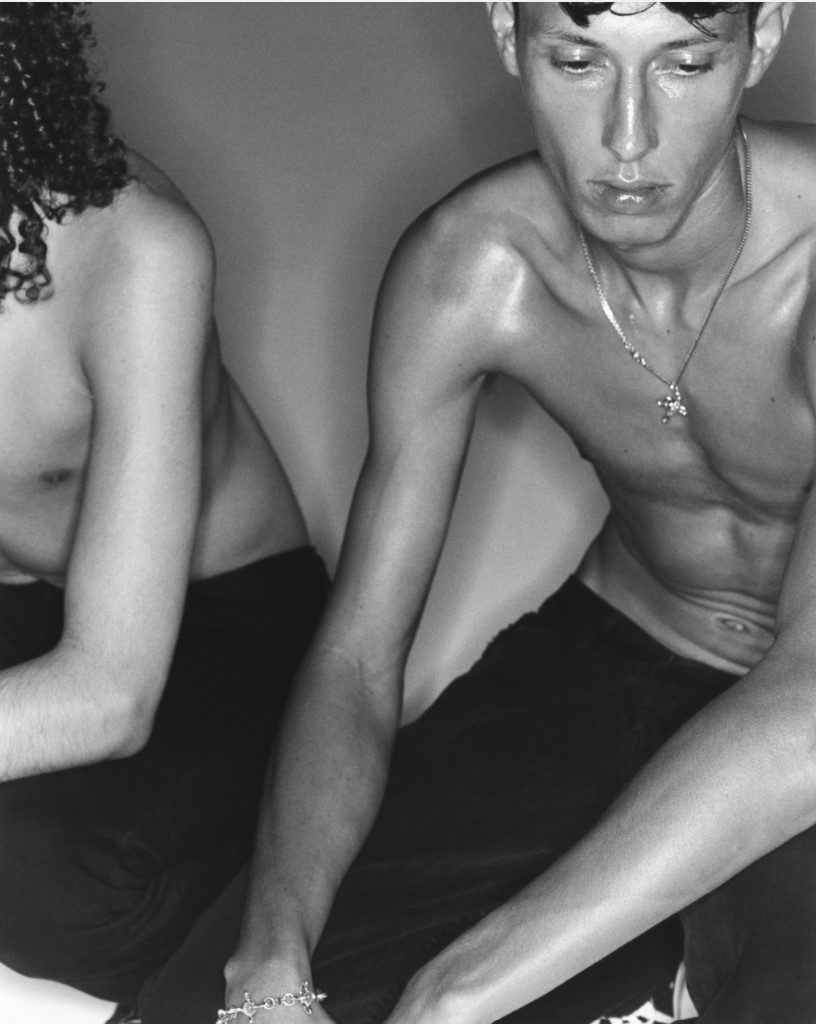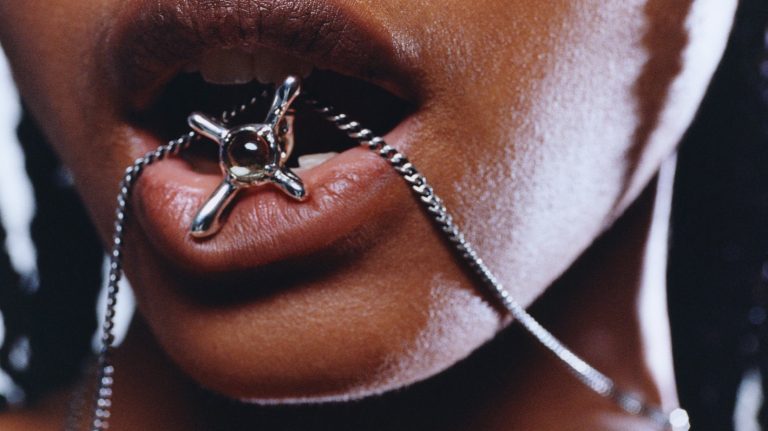

Quentin Pontonnier, the visionary mind behind Tant D’Avenir, delves into the world of handmade jewellery and intricate designs. In this interview, he speaks about the inspiration behind founding Tant D’Avenir, the significance of Paris in shaping its design philosophy, and the meticulous creative process that brings each unique piece to life.
hube: What sparked the inspiration for founding TANT D’AVENIR, and how does the name reflect the essence of your handmade jewellery brand?
Quentin Pontonnier: Tant D’Avenir turned out to be a very spontaneous adventure. I developed a passion for jewellery and fashion design very early on. After my jewellery training at the Ecole Boulle, I made my first personal creations in my bedroom while working on the side to earn money (cook, reception, delivery…) I soon realised that what really drove me was my project and I ended up devoting myself to it full-time: I became my own boss. The name Tant D’avenir is a wordplay. “Tant” in French is pronounced like “time” and it means “so much of”, so it really represents the energy of the brand. We want our brand to have a great future and be full of ambitions. Also, a brand that is edge-cutting and new in terms of style. We aim to rework different styles — from classic to retro-futurist to art deco — by putting Tant D’Avenir into them.
h: Paris is known for its rich artistic heritage. How does the city’s cultural ambience influence your creative process and the design philosophy of TANT D’AVENIR?
QP: Paris is incredible and has a huge influence on me. I’ve even dedicated two of our classic rings to it, featuring the Paris coat of arms. The city has been my inspiration since I was a child, whether in terms of its Haussmann architecture, fashion, or skate culture… When I was younger, I was a member of a skateboarding team in the 13th arrondissement, and we skated everywhere, especially in the Parisian “beaux quartiers”. Seeing this new architecture — and not just the skyscraper of the 13th arrondissement — inspired me enormously. This city will always be one of my favourite playgrounds.
h: Could you share your favourite material to work with, and how does it contribute to the uniqueness of your jewellery pieces?
QP: It’s hard to say because the DNA of Tant D’Avenir has long resided in the use of sterling silver. It’s still a precious metal but more affordable than gold or platinum. By working with great thicknesses we can have fun creating jewellery that will stand the test of time just as well and that more people can afford. It’s also an advantage for unique pieces which we would never be able to make if we used gold or platinum. It will remain an emblematic material for me and the brand. But our vocation is L’Avenir (French for “The Future”) and I’m enjoying working with precious stones and gold more and more.
h: TANT D’AVENIR pieces have a distinctive style. How would you describe your signature design elements, and what emotions or stories do you aim to convey through your jewellery?
QP: We have lots of signature design elements. First of all, there’s patina. Our jewellery already has a special aesthetic because we’ve managed to master oxidation and give it a “shaped by time” look. We always look for the very best materials, especially when it comes to our selection of semi-precious stones.
We develop a lot of patterns for our creations. For example, we designed a unique shape for our rings — they are full of details from the inside. For our latest collection NO SIGNAL the inner rings feature small alien sculptures. Finally, our signature symbol, the column, — always revisited, symbolising our desire to last while redefining itself each time.
We want people to fall in love with our jewellery — this is the emotion we aim to evoke. All our creations tell a very special story because of their influences, their shape, and the way they are worn. What really matters is the coup de coeur effect — the jewel is seen as a piece that will be worn and passed down through time.
h: Handmade jewellery adds a personal touch. Could you walk us through your creative process, from conceptualization to the hands-on crafting of each piece? Are there any rituals or routines you follow during this process?
QP: I love the creative process of making jewellery. It’s a lot of coffee and long sleepless nights but it gives you that indescribable thrill. Usually, it pops with an influence: a trip, a movie, a feeling, an artistic movement… it can happen at any time. Partially, that is why I always work on several collections at once.
Then I draw. Pencils and sketchbooks have become my obsession. I explore shapes and volumes and only think about the object. It’s so important not to restrict myself on my artistic path! I refuse to do so. At this point in the creative process, I’m in my own bubble. I only draw in bed. My bedroom is my world, I have my lights, lots of music, my books, my inspirations…
Then comes the design part, where it’s a question of providing a technical point of view, so we work out our shapes, try them out, and do a lot of improvement directly in the studio to get the perfect model.

